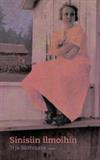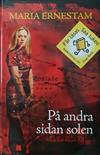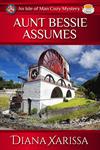
Concise AACR2
by Author unknown | Reference | This book has not been rated.
ISBN: 1856045404 Global Overview for this book
ISBN: 1856045404 Global Overview for this book
1 journaler for this copy...
General Introduction
This book is intended to convey the essence and basic principles of the second edition of the Anglo-American cataloguing rules (AACR2) without many of that comprehensive work's rules for out-of-the-way and complex materials. Those rules from the full text that have been retained have been rewritten, simplified and usually, supplied with new examples. This rewriting is intended to highlight the rules for commonly encountered library materials and to make them even more accessible. Although the method of presentation is different, the end result of the cataloguing process should be the same whether one is using the full or the concise text. In other words, the Concise AACR2 prescribes the same cataloguing practice as the full text, but presents only the more generally applicable aspects of that practice and presents them in different terms. The user of the Concise AACR2 is referred to the full text for guidance on problems not covered by the concise text and for fuller explanation of rules contained in the concise text. To assist reference between the two texts, a table is given (appendix III) that relates the rules in the concise text to their equivalents in the full text.
The Concise AACR2 is intended for cataloguing students, cataloguers in a number of different situations and other librarians. Persons working in small libraries, especially "one person" libraries, will be able to do standard cataloguing without the necessity of learning all the details of structure and content of the full text. Beginning students of cataloguing, especially those who wish to learn about cataloguing but not to be cataloguers, will find the Concise AACR2 a good introduction to the national cataloguing standard. Paraprofessionals engaged in copy cataloguing by use of catalogue records supplied by national libraries or members of bibliographic networks will find the Concise AACR2 an accessible guide to standard catalogue practice. Public service librarians who wish to understand new developments in descriptive cataloguing practice will find the Concise AACR2 a relatively brief summary of that practice. Last, cataloguers working in a non-English-language environment will be able to use for Concise AACR2 as a readily comprehensive summary of AACR2 practice.
In practical application, the Concise AACR2 is likely to be most useful in small general libraries, though it can be used for basic cataloguing in large general libraries and for cataloguing in multimedia resource centres and in nonarchival specialist libraries.
The style and spellings used in the Concise AACR2 follow those of the full text in that they generally follow the Chicago manual of style and Webster's New international dictionary. Where Webster's permits a British spelling as an alternative, that spelling is followed. As with the full text, care has been taken in the Concise AACR2 to avoid sexist language and sexist implications in the rules and examples.
The order of rules in the Concise AACR2 follows the usual and recommended sequence of cataloguing, in that part 1 deals with the establishment of access points (names headings and uniform titles) to be added to those descriptions, and references to be made to those access points. Separate introductions to part 1 and part 2 begin on pages 5 and 60 , respectively.
These rules are based on the idea that one main entry is made for each item described and that this is supplemented by added entries. If, in your catalogue, no distinction is made between main and added entries, use rules 21-29 to decide all the access points to be added to a description and ignore the distinction between main access points and other access points.
Distinguish the headings and/or uniform titles added to the description by giving them on separate lines above the description. If any entry begins with a title proper (that is, the first element of the description-see rule 1B), give the description alone or repeat the title proper on a line above the description.
This book is intended to convey the essence and basic principles of the second edition of the Anglo-American cataloguing rules (AACR2) without many of that comprehensive work's rules for out-of-the-way and complex materials. Those rules from the full text that have been retained have been rewritten, simplified and usually, supplied with new examples. This rewriting is intended to highlight the rules for commonly encountered library materials and to make them even more accessible. Although the method of presentation is different, the end result of the cataloguing process should be the same whether one is using the full or the concise text. In other words, the Concise AACR2 prescribes the same cataloguing practice as the full text, but presents only the more generally applicable aspects of that practice and presents them in different terms. The user of the Concise AACR2 is referred to the full text for guidance on problems not covered by the concise text and for fuller explanation of rules contained in the concise text. To assist reference between the two texts, a table is given (appendix III) that relates the rules in the concise text to their equivalents in the full text.
The Concise AACR2 is intended for cataloguing students, cataloguers in a number of different situations and other librarians. Persons working in small libraries, especially "one person" libraries, will be able to do standard cataloguing without the necessity of learning all the details of structure and content of the full text. Beginning students of cataloguing, especially those who wish to learn about cataloguing but not to be cataloguers, will find the Concise AACR2 a good introduction to the national cataloguing standard. Paraprofessionals engaged in copy cataloguing by use of catalogue records supplied by national libraries or members of bibliographic networks will find the Concise AACR2 an accessible guide to standard catalogue practice. Public service librarians who wish to understand new developments in descriptive cataloguing practice will find the Concise AACR2 a relatively brief summary of that practice. Last, cataloguers working in a non-English-language environment will be able to use for Concise AACR2 as a readily comprehensive summary of AACR2 practice.
In practical application, the Concise AACR2 is likely to be most useful in small general libraries, though it can be used for basic cataloguing in large general libraries and for cataloguing in multimedia resource centres and in nonarchival specialist libraries.
The style and spellings used in the Concise AACR2 follow those of the full text in that they generally follow the Chicago manual of style and Webster's New international dictionary. Where Webster's permits a British spelling as an alternative, that spelling is followed. As with the full text, care has been taken in the Concise AACR2 to avoid sexist language and sexist implications in the rules and examples.
The order of rules in the Concise AACR2 follows the usual and recommended sequence of cataloguing, in that part 1 deals with the establishment of access points (names headings and uniform titles) to be added to those descriptions, and references to be made to those access points. Separate introductions to part 1 and part 2 begin on pages 5 and 60 , respectively.
These rules are based on the idea that one main entry is made for each item described and that this is supplemented by added entries. If, in your catalogue, no distinction is made between main and added entries, use rules 21-29 to decide all the access points to be added to a description and ignore the distinction between main access points and other access points.
Distinguish the headings and/or uniform titles added to the description by giving them on separate lines above the description. If any entry begins with a title proper (that is, the first element of the description-see rule 1B), give the description alone or repeat the title proper on a line above the description.










